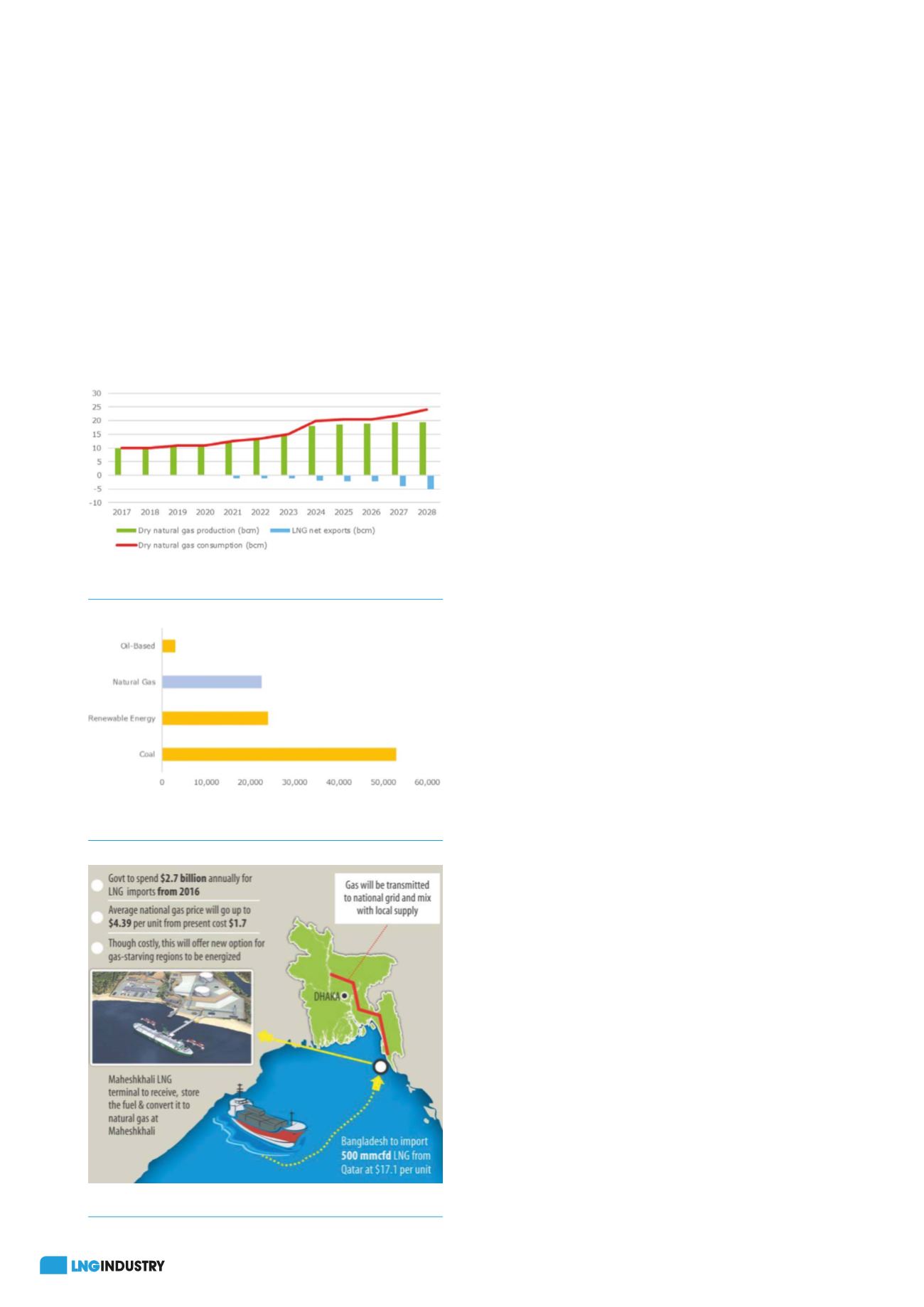
14
January 2020
as living conditions improve. Domestic gas consumption is
forecast to grow approximately 10% annually in the next
decade, supported by government efforts to diversify out of coal
into cleaner alternatives.
One factor setting Vietnam apart is its emergence as a
global manufacturing hub. Manufacturers are setting up shop in
Vietnam, attracted by the competitive local cost environment.
The structural shift in Vietnam’s economic make-up will push it
along a more gas-intensive growth trajectory.
A narrative around supply tightness is emerging – while
Vietnam has gas fields, production facilities and processing
infrastructure, it also has finite resources. Vietnam’s domestic
gas production is on a sharp decline curve after 2020 as
existing fields are exhausted, precisely at the same time when
energy demand is ramping up.
Under its gas industry development plan, Vietnam is
looking at LNG imports to bridge the shortfall. An estimated 10
LNG terminals are in the pipeline.
2
This includes Vietnam’s first
LNG terminal in the southern port of Thi Vai, operated by
PetroVietnam and due for completion in 2022.
3
In another
landmark project, Vietnamese NOC Petrolimex, in partnership
with Japan’s JXTG, is looking to build an integrated LNG
terminal and power plant in the southern coastal province of
Khan Hoa.
4
Vietnam’s biggest challenge is financing its ambitious gas
infrastructure program with the public debt/GNP ratio close to
its ceiling level. Major LNG projects will have to compete with a
host of other proposed infrastructure projects to secure
government approval. The best hope is for foreign capital to
help fund an LNG infrastructure program. Established players
like Japan and the US are taking a serious look at Vietnam as a
potential new customer market to sell LNG.
Philippines
Strong economic growth, a large population and a national
policy focused on decarbonisation and energy diversity are
supportive demand drivers for LNG in the Philippines.
Similar to Vietnam, there are domestic supply concerns.
According to Department of Energy (DOE) estimates, the
offshore Malampaya gas field has less than five years of
available resources. Malampaya is the main source of natural
gas for Luzon, the most populated island in the Philippines
with more than 20 million people.
To secure the future of existing gas power stations and
create a foundation for additional plants, the Philippines is
turning to LNG. Philippine utility First Gen Corp. is poised to
build the first LNG import terminal in the Batangas province
before the Malampaya gas field reserves deplete in 2024. There
is Japanese interest with JGC Corp. identified as preferred
engineering, procurement and construction (EPC) contractor
and Tokyo Gas likely to take a 20% stake in the project.
5
Manila-based fuel retailer Phoenix Petroleum is in talks
with the Philippine National Oil Co. to develop a US$2 billion
LNG hub.
6
Like other emerging LNG projects, this is more than
simply building an LNG import terminal. It will likely include
gas pipelines, processing and other gas network infrastructure.
US project developers are looking at the Philippines closely.
One potential investor is Fortress Energy, which is currently in
talks with the DOE regarding an integrated onshore LNG import
terminal and gas power plant.
7
The US LNG model is attractive
given its ability to provide customised, flexible solutions ranging
from gas supply, conversion of existing plants into gas-fired
assets and development of Greenfield LNG power assets.
None of this is without challenges and risks. The
Philippines has courted LNG for several years. In 2015,
Australia’s Energy World Corp. (EWC) was close to building an
integrated LNG import hub and gas power plant in Quezon
province. The project has yet to materialise, with reports of
financing bottlenecks, regulatory barriers and issues over
transmission arrangements.
Bangladesh
A fast growing, South Asian emerging market economy with a
population of 150 million, Bangladesh is looking to develop
its gas industry, in partnership with overseas investors. It is a
familiar story of declining domestic gas output twinned with
rapidly growing demand and a need to diversify out of coal.
Figure 1.
Insufficient gas production pushes Vietnam to
LNG (source: EIA, Fitch Solutions).
Figure 2.
Philippine power generation fuel mix, 2018 (GWh)
(source: Philippine Department of Energy).
Figure 3.
Bangladesh tilts towards LNG.








